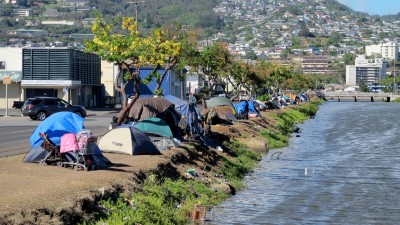Statehood Questioned at Hawaii’s 60th Anniversary

August 16, 2019, marks the 60th Anniversary of Statehood for Hawai’i. It will go little noticed. This article offers new information on illegalities and fraudulence regarding the statehood vote, and why it should not have been accepted by the United Nations.
In 1945, the United States, as a founding member of the United Nations, accepted all U.N. Charter obligations. As a nation with Territories, under Article 73 of the Charter, it took on, “as a sacred trust, the obligation to. . . develop self-government” for the descendants of the nations it had occupied. The U.S. did this for some territories. But in Hawaii, it did just the opposite. Our people achieving “the full measure of self-governance” was never mentioned. The statehood vote offered only movement from a U.S. Territory to a U.S. state. Total absorption rather than required liberation.
The ballot wording was bogus. U.N. Resolution 742 (VIII), adopted in 1953, required that plebiscites offer “freedom of choosing between several possibilities, including independence.” The wording of the statehood ballot question was: “Shall Hawaii immediately be admitted into the Union as a State?” The only possible answers were “Yes” and “No.” No option for independence was provided. The vote did not comply with the Charter or Resolution 742.
The UN Charter expects only the citizens of the occupied nation—in our case the descendants of Hawaiian Kingdom subjects–will make decisions regarding their self-governance. During the 61 years that Hawaii was a Territory, however, there was a huge in-migration of American settlers, as well as transient U.S. military personnel and their dependents. The 1900 census shows 2,900 Caucasians living in the islands. In 1959, it had ballooned to 202,230. Any American citizen 20 years or older who had lived in Hawaii for at least a year was allowed to vote, even U.S. military. And they did. Thus, the wrong people voted.
During the Territory era, the United States made tremendous efforts to inculcate belief in a virtuous America. During those six decades, schools assiduously avoided any mention of the U.S. invasion, overthrow, and takeover of the Hawaiian Kingdom…or the skirting of the Constitution to achieve Annexation. A valid referendum requires that voters give informed consent. But decades of US hiding the facts made informed consent impossible. Had statehood voters known the truth. . . .
The official report states that 94% of voters supported statehood, but the facts are quite different. The 94% only counts the Yes and No votes cast. When blank ballots are included, only 77% of those who voted actually voted for statehood. But even more shocking is the fact that, in the most important election ever held in Hawai’i, only 35% of those of eligible age actually registered and turned up at the polls. Sixty-five percent “voted with their feet” against statehood by staying home. When the blank votes and “votes with their feet” are factored in, only 27% of eligible voters cast a ‘Yes’ vote at the polls, far below the 50% required to win.
America knew that the UN would soon pass its “Declaration on the Granting of Independence to Colonized Countries and Peoples.” Great pressure would mount to liberate Hawai’i. The statehood vote was a sham to quickly secure United Nations approval for US permanent retention of Hawaii–just twelve months and two days before the Declaration was passed.
We three authors recently wrote “A Call for Review of the Historical Facts Surrounding UNGA Resolution 1469 (xiv) of 1959 Which Recognized Attainment of Self-Government for Hawaii.” It amplifies the facts above and is currently being disseminated at the United Nations and to the public. Please read it and add your name in endorsement at www.RestoringTheHawaiianNation.com. Also find information there about the Hawaii National Transitional Authority, and a Resolution for the State of Hawaii to recognize Hawaiian Nationals as a people living in the Hawaiian Islands with all the lawful rights of a free people.
It’s time to show support.
*
Note to readers: please click the share buttons above or below. Forward this article to your email lists. Crosspost on your blog site, internet forums. etc.
This article was originally published on Star-Advertiser.
Kioni Dudley, Ph.D., educator, Hawaiian scholar, co-author A Call for Hawaiian Sovereignty, activist.
Leon Kaulahao Siu has served as the U.N. Hawaiian Kingdom Minister of Foreign Affairs for the past 20 years
Poka Laenui, Attorney, Chair – Native Hawaiian Convention, Spokesperson to UN (1983 to 1990), Office of Hawaiian Affairs Trustee (1982 – 1986)

